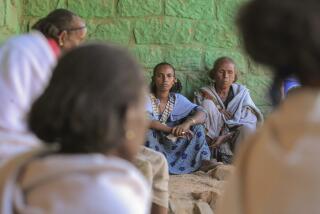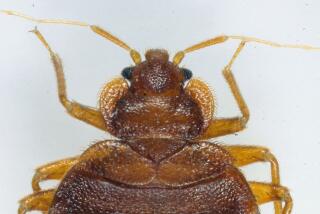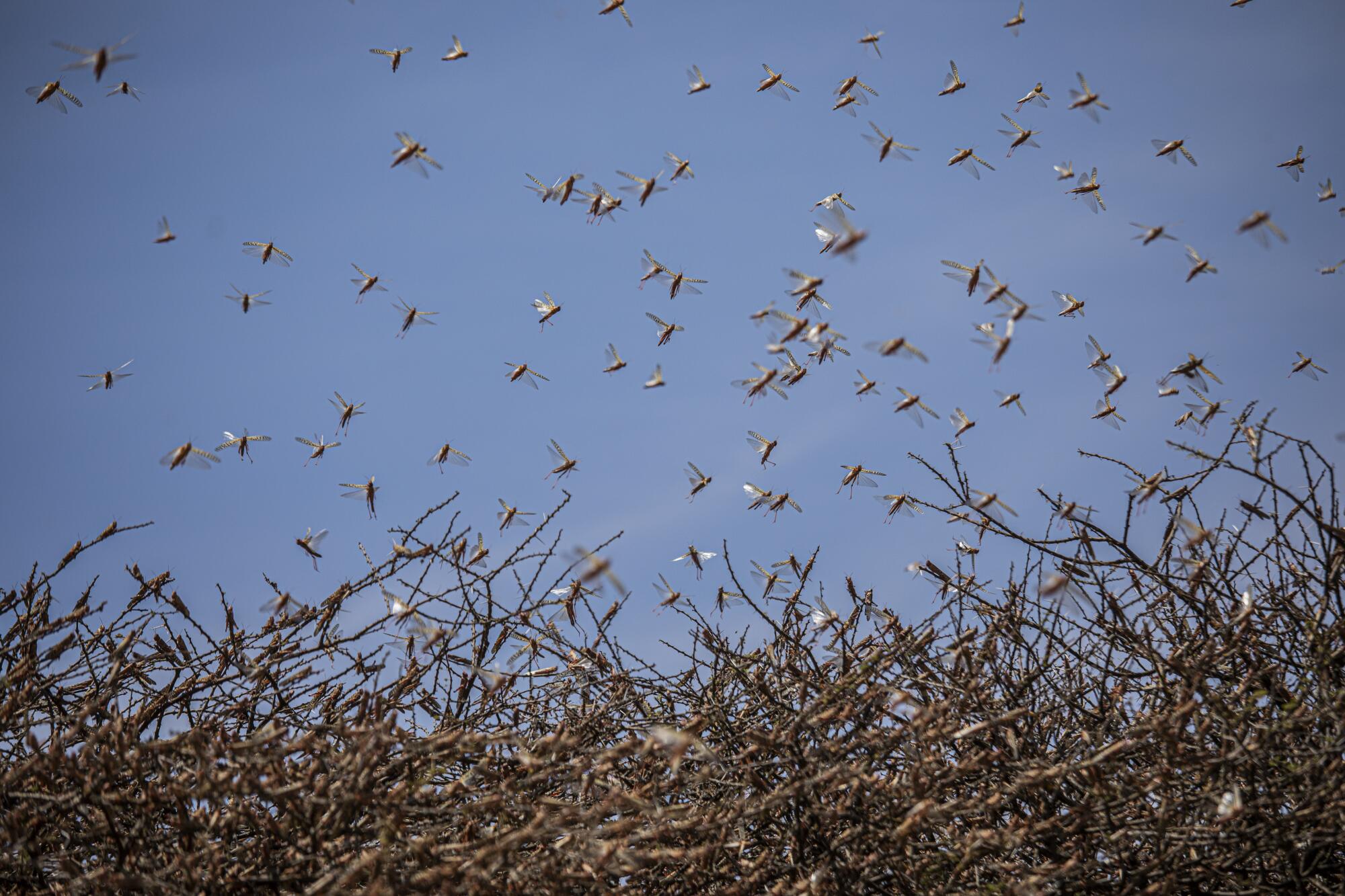
- Share via
BEER, Somaliland — In the distance, it looked like a cloud of confetti.
Faisa Abdi Alleh had never seen anything like it. Neither had anybody else here in the tiny town of Beer in this self-declared republic within Somalia.
With the cloud hovering over her farm about a mile away, Alleh and several of her children ran to investigate.
As they got closer, they could make out the whirring wings and the ridged torsos no longer than a finger.
“We saw them before they landed,” Alleh recalled.
For the next week, she and several of her children used clothing, sticks and anything else they could find to fend off the invaders. But eventually they could only watch as the insects devoured every green leaf in sight, including all 14 acres of sesame and beans they planned to sell this season.
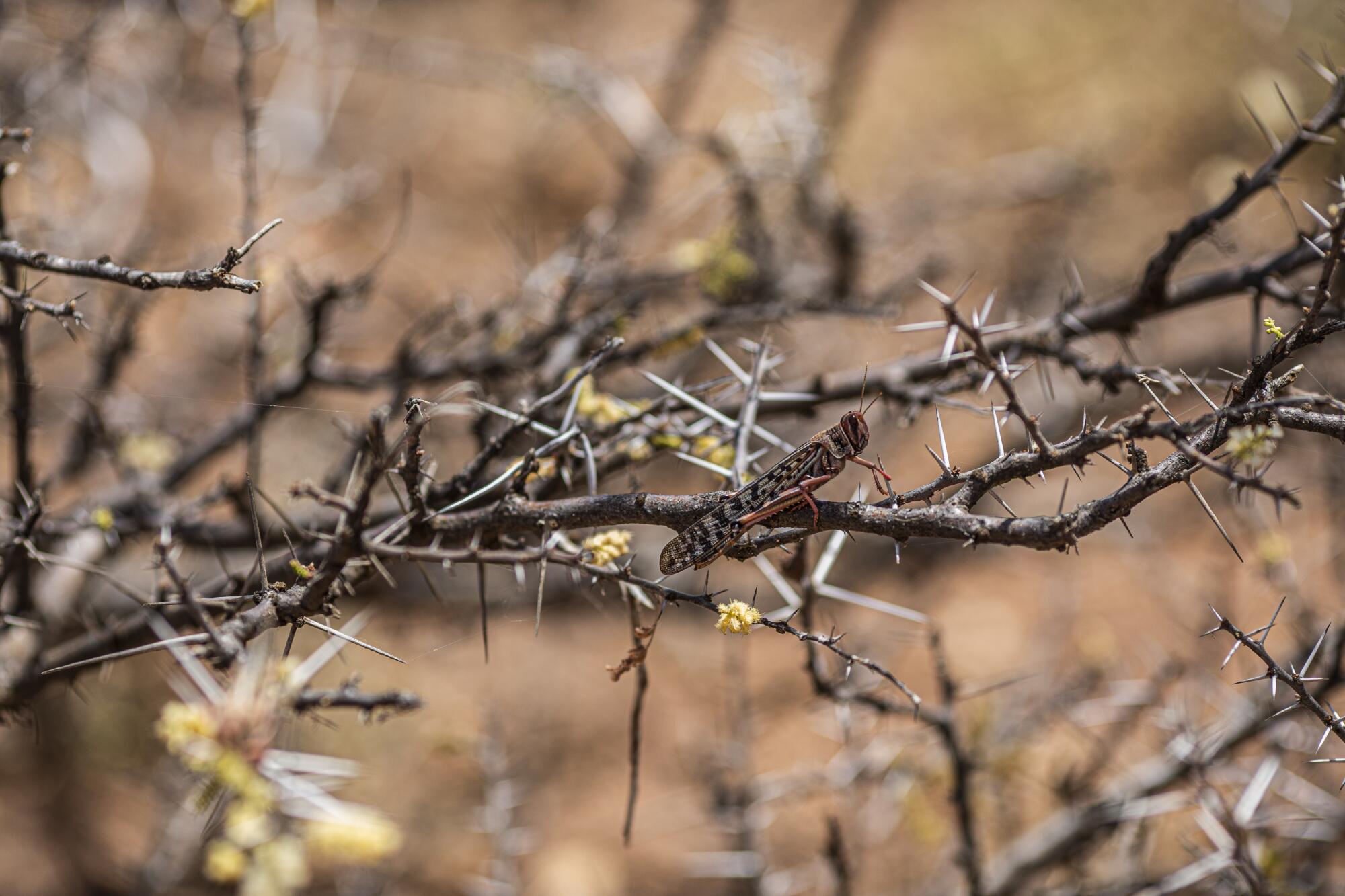
“We couldn’t stop them,” Alleh said.
Schistocerca gregaria, better known as the desert locust, has smitten East Africa like a plague from the Bible.
On a continent that has suffered repeated outbreaks of Ebola and is now fighting the coronavirus, the locusts may pose no less of a challenge. Hundreds of billions of them have conquered territory in at least eight countries, overwhelming governments and aid organizations while consuming crops and grazing land so rapidly that experts fear widespread famine.
Here in Somalia — where 2.6 million people are already displaced because of armed conflict and drought — no field or family has been spared.
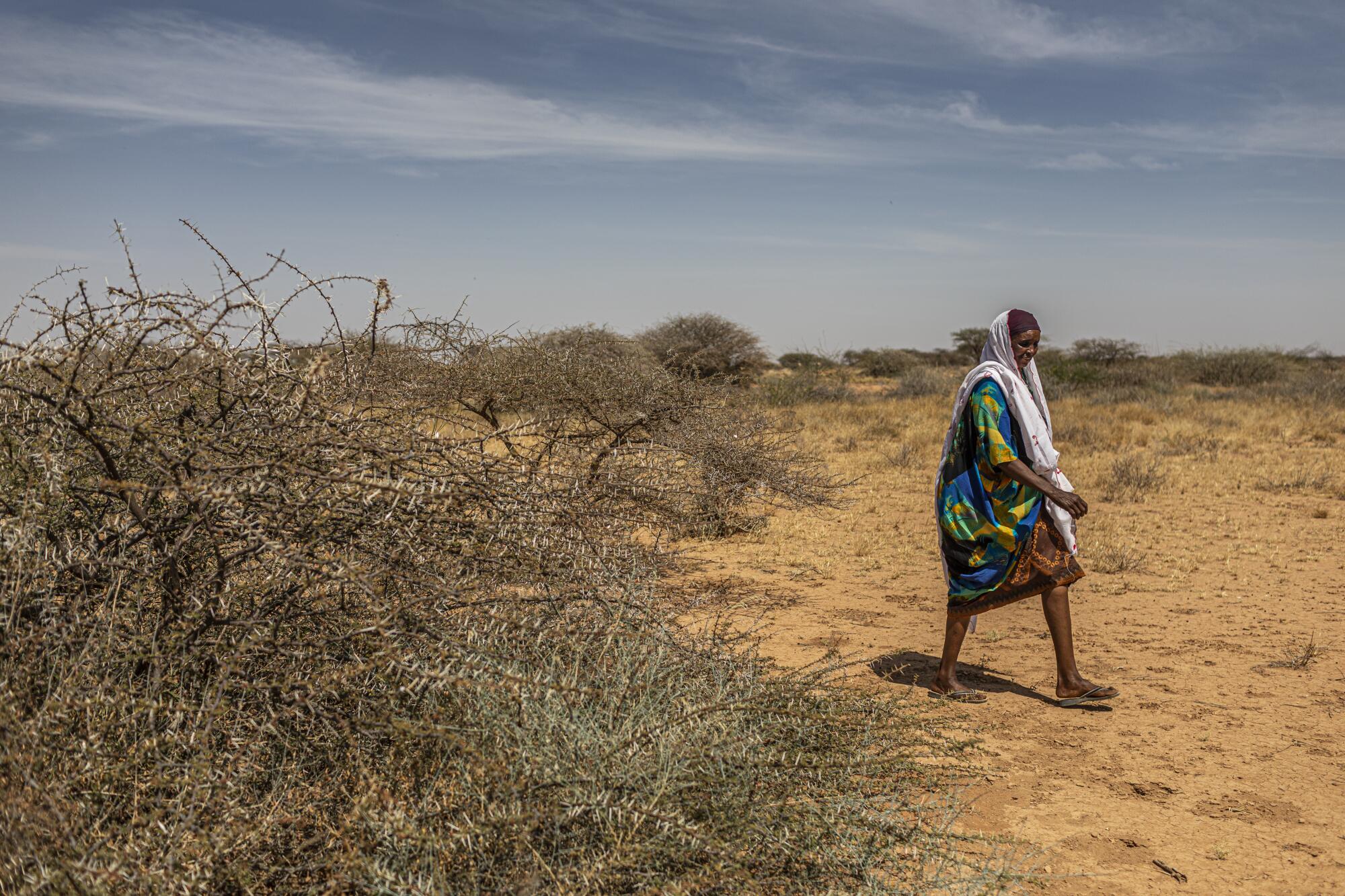
Alleh estimated that the locust attack on her land in November resulted in lost crop sales amounting to $10,000, leaving her family and six others that help her farm deep in debt and unable to cover school fees or other basic expenses.
“My entire life in the world, I haven’t seen something like this before,” said Alleh, who has been raising 10 children on her own since her husband died of a heart attack two years ago.
Scientists blame a pair of 2018 cyclones in the Indian Ocean, a region they say is likely to experience more such storms as global temperatures rise.
The cyclones dumped unusually large amounts of rain on the locusts’ main breeding ground, a swath of the Arabian Peninsula known as the “Empty Quarter.”
That led to optimal breeding conditions. Locusts lay their eggs in the sand, and when that sand is moist, the eggs can hatch in as little as two weeks and the larvae can mature in as little as two more to start reproducing again.
In just nine months and three rounds of breeding, the population exploded by a factor of 8,000.
From the Empty Quarter — which encompasses parts of Saudi Arabia, Oman, the United Arab Emirates and Yemen — the swarms crossed the Red Sea to the coast of Somalia in the summer of 2019 and laid more eggs there before carving a path of destruction west and south, deeper into Africa.
The storms of 2018 also reached Somalia, ending several years of drought and raising the hopes of Alleh and her neighbors in Beer for a lush growing season and a profitable harvest.
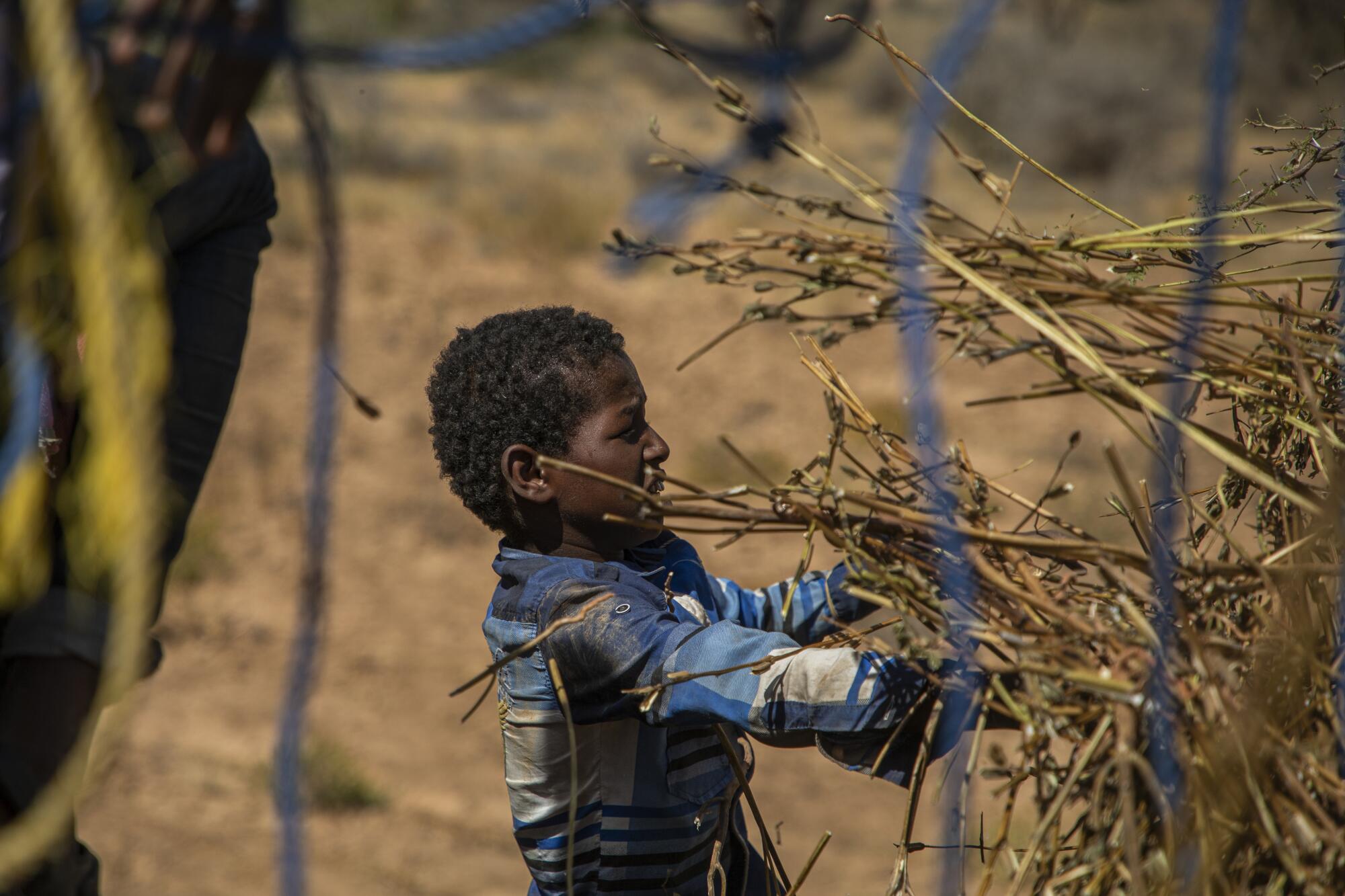
But by January, the locust swarms had damaged 100% of Somalia’s staple crops of maize and sorghum, according to the Food and Agriculture Organization of the United Nations.
In neighboring Kenya, up to 30% of pastureland has been lost. Farther west, locusts have gorged on crops in South Sudan, already reeling from years of civil war and widespread hunger.
And they have laid new eggs in Ethiopia, Eritrea, Djibouti and Uganda. The U.N. is still trying to assess the damage in many places.
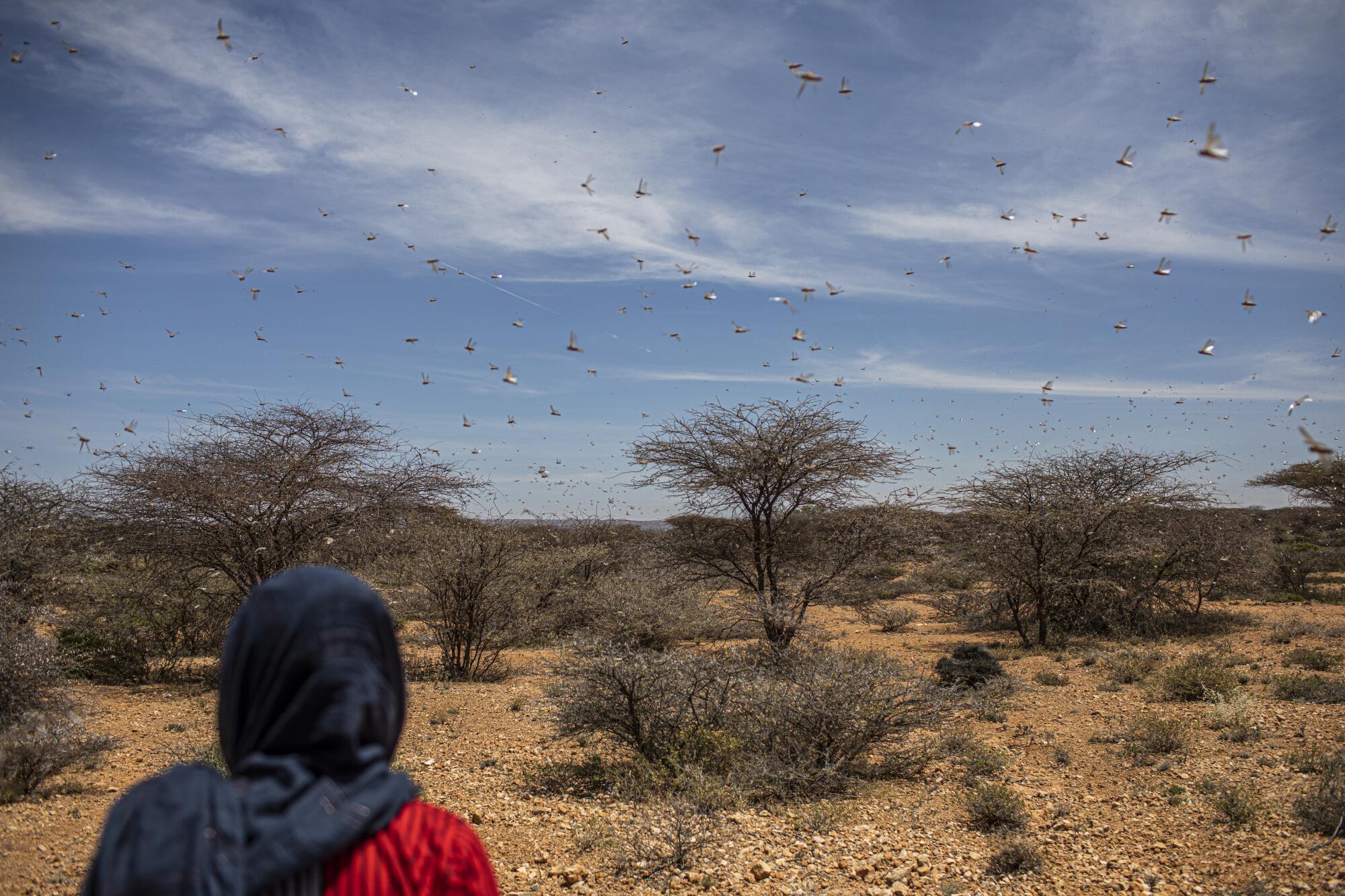
In a single day, a swarm can travel nearly 100 miles and eat its own weight in leaves, seeds, fruits and vegetables — as much as 35,000 people would consume. A typical swarm can stretch over 30 square miles.
The most effective way to combat the infestation is spraying pesticides from airplanes. But most governments in the region lack the resources to carry out the large-scale operations that would require.
The response has been especially weak here in Somaliland.
“We don’t have, actually, anything to combat with these locusts,” said Hassan Mohamed Ali, the Somaliland minister of planning and national development.
“We don’t have planes,” he said. “It’s a financial issue. It’s a technical issue.”
That left farmers to fend for themselves.
“People were spraying it,” said Shukri Haji Ismail, the minister of environment and rural development. “You can imagine when you’re using hands, or when you’re using a car, it’s not fast enough. The locusts will destroy acres and acres of land.”
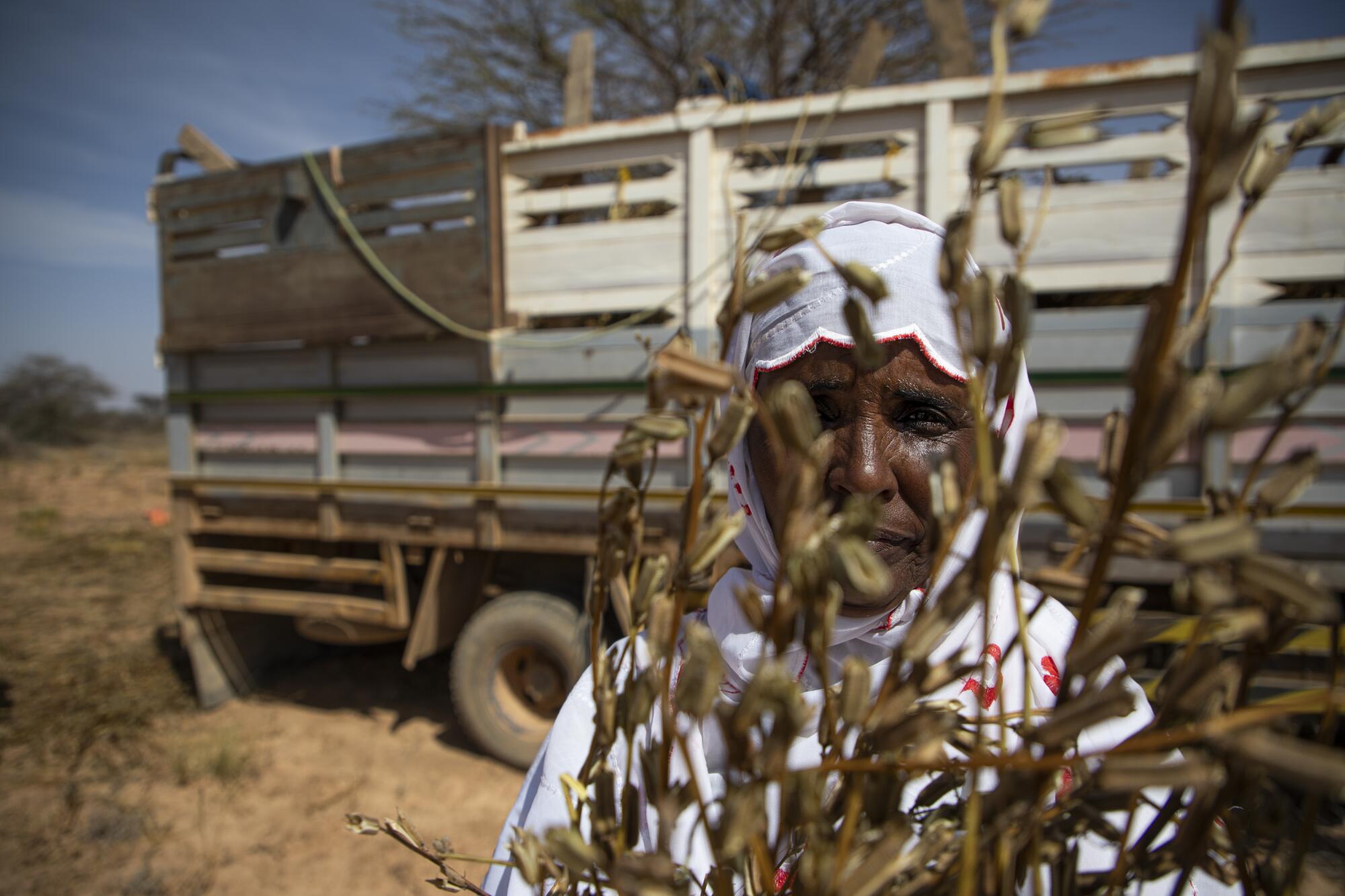
The government response is now being coordinated by the newly formed Somaliland Locust Management Task Force, which includes experts from around the world.
In public service announcements on radio and television, and in text messages directed at local leaders, communities will be encouraged to report locust sightings and carry out control exercises such as burying eggs in trenches.
The Food and Agriculture Organization said it is working to improve monitoring and eradication efforts across East Africa.
“We need swift action to inhibit another round of reproduction,” Keith Cressman, who holds the title of senior locust forecaster at the U.N. agency, wrote in an email.
“This is not the first time that East Africa has seen locust upsurges approach this scale,” he said. “But the size of the current situation is unprecedented in recent memory — it’s a sort of ‘100-year storm.’”
Back in Beer, after so many years of droughts and bad harvests, residents were still trying to understand why the locusts befell them. One popular superstition is that the insects come only when everything else is going well.
“I don’t have any idea, but people said if the locusts are coming it means there is prosperity,” Alleh said.
Alleh lies awake at night thinking about the debts she will struggle to pay off. There are the costs of planting last season — tractor rental, seeds and labor.
In addition, after one of her sons crashed a water tanker and killed nine people last year, Alleh had to borrow $1,000 to pay the families of the victims and get him out of jail. She still owes $600.
“It can happen that your land is auctioned off,” she said. “It can happen.”
On a recent Friday evening, Alleh hitched a ride to a nearby village to join other women from the community in a weekly sitaad, a ceremonial gathering of about 40 local women to dance, sing and pray.
Most had been by affected by the locusts.
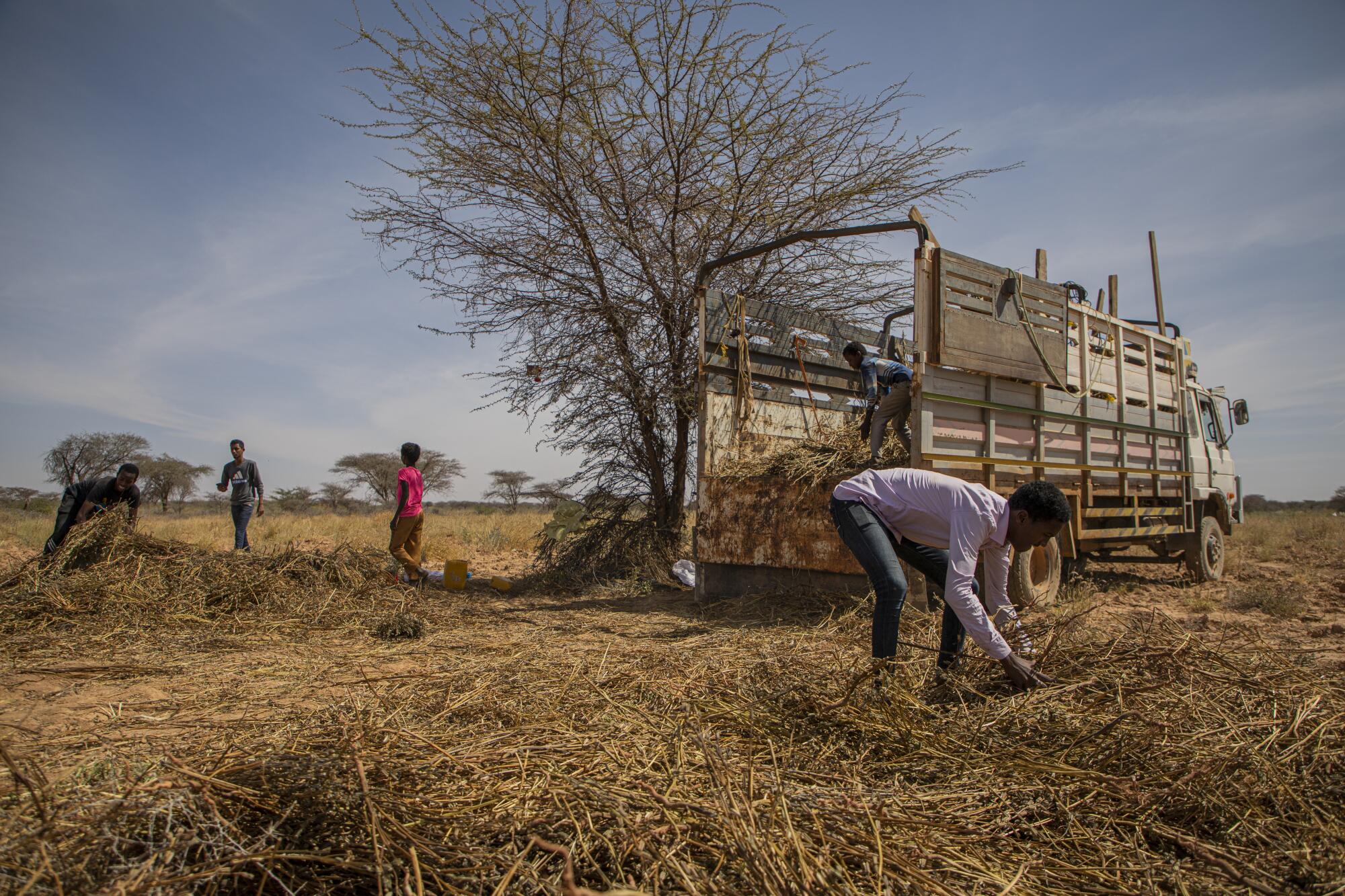
It had been four months since the locusts destroyed Alleh’s crops and left. Workers were still raking up the last of her dead crops and loading them onto an open-bed truck to be used as fodder for livestock.
When a field mouse, one of the few remaining signs of life on the land, scuttled out from under a rotting pile, children gleefully started kicking it around.
Alleh planned to plant again as soon as this month.
“I don’t think that there will be another [swarm of] locusts or droughts,” she said. “But only Allah knows that.”
What she didn’t realize is that another locust storm was brewing.
About an hour east of Beer, workers from the aid group Oxfam were driving through the desert when they saw in the distance what looked like snow falling from the clear blue sky.
As the SUV drew closer, a low hum could be heard through the windows as a swarm came into clearer view.
“Stop the car!” shouted one of the workers.
She and her colleagues jumped out, spending the next hour shooting video and photographs to share with the group’s food security team.
“I can’t believe they’re here,” another worker said.
These locusts most likely hatched from the eggs deposited last year on the coast of Somalia. That population is expected to grow through March.
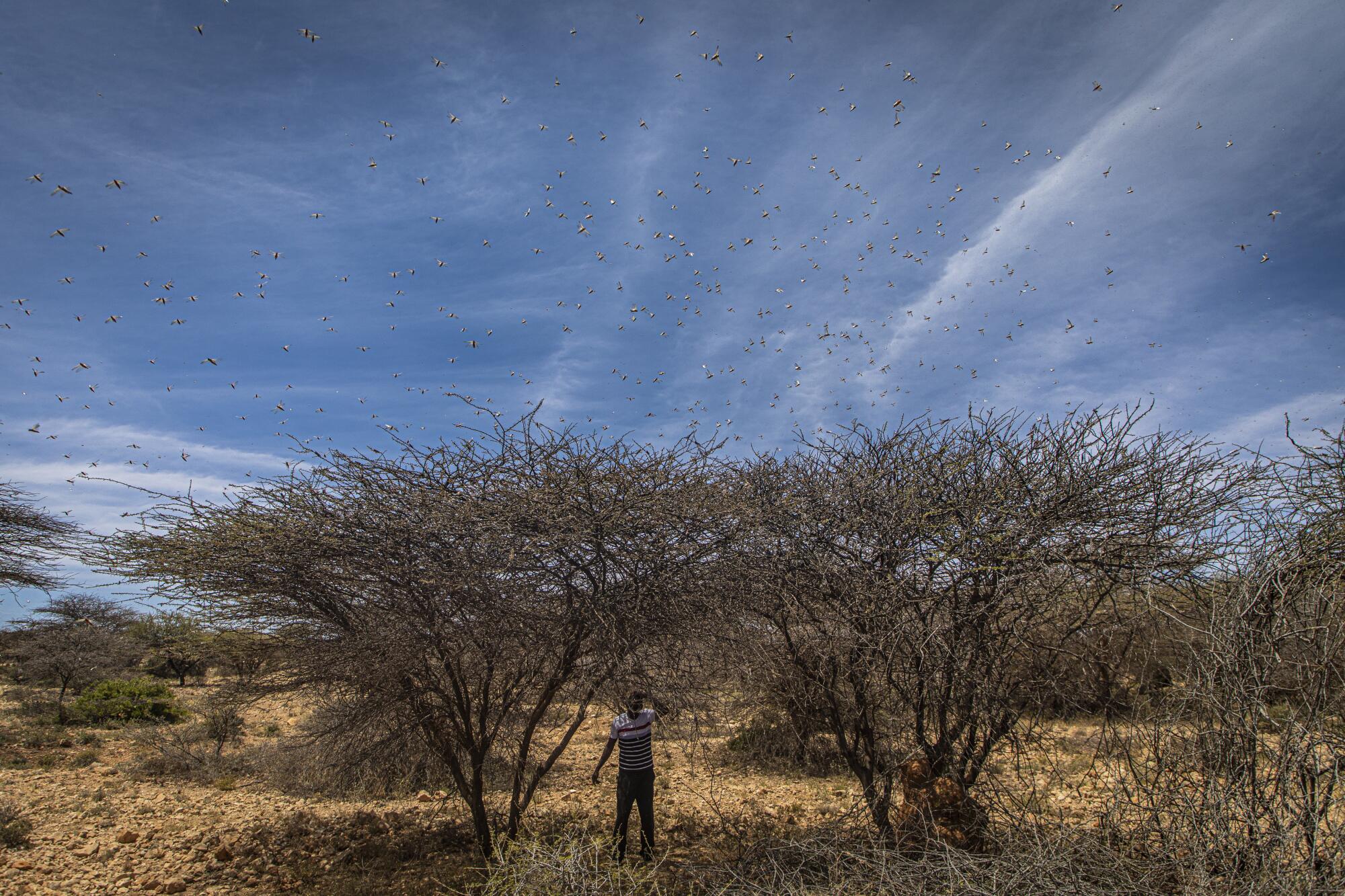
Wadekar is a special correspondent.
This article was supported by the Pulitzer Center.
More to Read
Sign up for Essential California
The most important California stories and recommendations in your inbox every morning.
You may occasionally receive promotional content from the Los Angeles Times.
